STUDENTS PROJECTS
PROJECTS2015
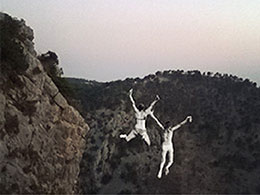
17 August, 2016
Revival of the medieval castletown of Anavatos, Chios
Transformation of a ghost village to core of life.
Students : Sachsamanoglou Maria, Stefanidou Lemonia
Supervisors: Dousi Maria, Paka Alkmini
School of Architecture, Faculty of engineering, Aristotle University of Thessaloniki
Presentation date : July 2015
The project in question is about the revival of the abandoned settlement of Anavatos, in central Chios.

Built of local stone upon a steep rock, on an altitude of 400 m., is totally integrated in its environment. The medieval character, the austere architecture of the dwellings, the repetition of the unit, the scale of the minimum, but mostly the relationship with the natural background -the rock- are the features that make up its unique ambience. The settlement consists of three different parts, expressing the different phases of its historical evolution: the citadel, the old and the new village. The state of abandonment, the lack of access, infrastructure networks and primary dwelling conditions in the historic shells remain unsolved problems up to our days.
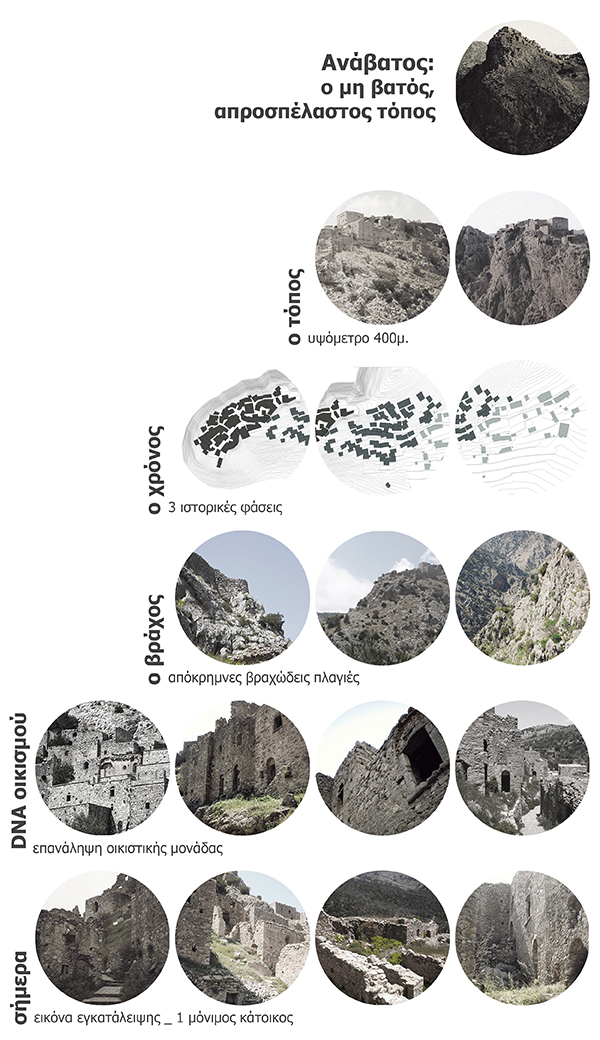
The proposed scenario concerns the revival of the settlement through the creation of a residential area, with the possibility of housing three hundred new residents, and the installation of cultural uses in the ruins of the citadel. The main purpose of this intervention is, basically, the protection of the settlement through its rehabilitation. The project concerns the whole settlement, but, as it has been understood through the analysis of the site, each one of its parts demands a special treatment, due to its different character, place and current situation (citadel, central part, new village).
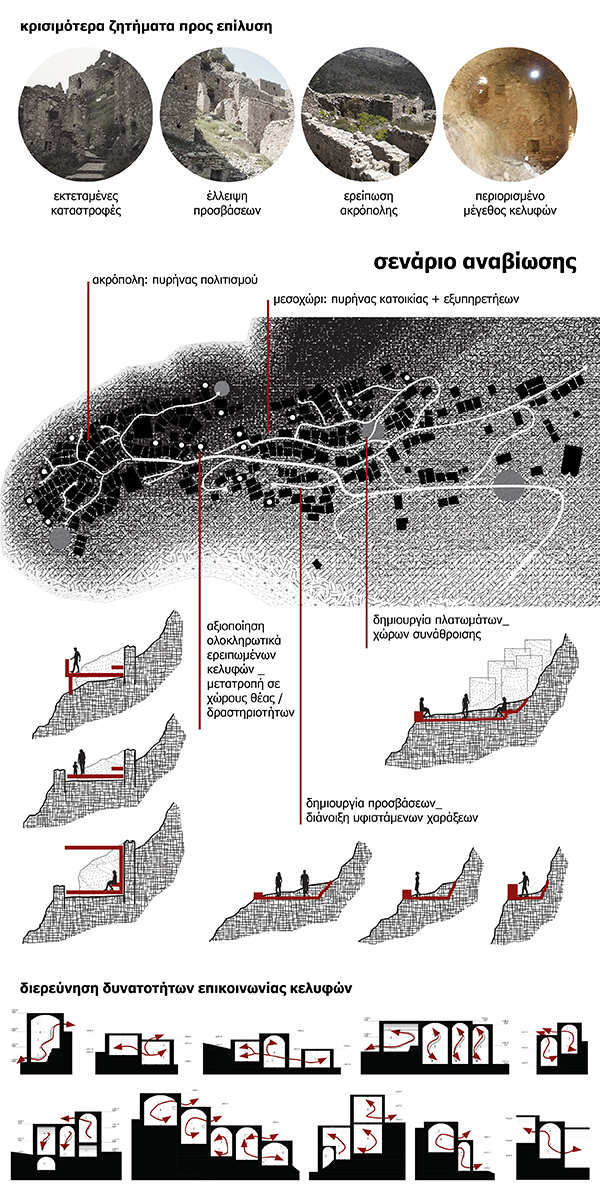
The intervention that is proposed in the space of the citadel is mild and ephemeral. The main uses that are proposed to be hosted in the shells with recognizable structure are these of culture and recreation. The rest of the shells, are selectively restored, depending on their state of preservation, so that the image of the fortified part is completed, while an easily removable route is placed, in order to ease the circulation of visitors among the ruins and unify the fragmented space of the citadel. This structure is made of a metal frame lined with wooden planks. It passes through the existing paths and also through some ruined shells, offering the possibility of wandering around the area, and understanding the complexity and high density of this part, and finally leads to small sitting spaces. These spaces are integrated in selected ruined shells that offer panoramic views, and are directly related to the rest of the main uses hosted in the citadel.
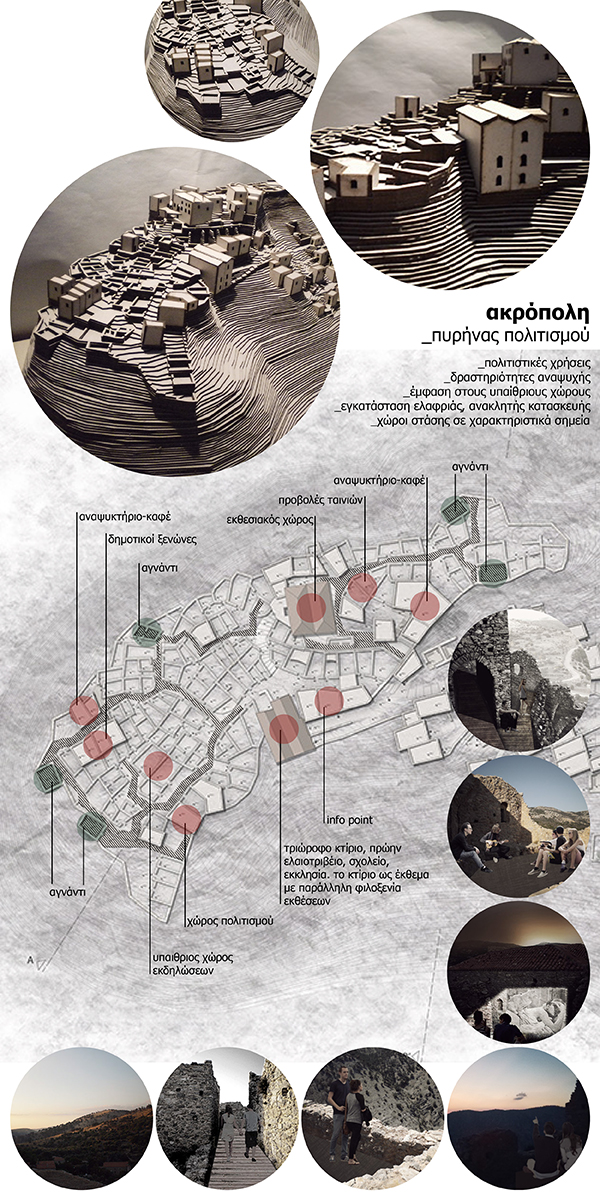
In the central part of the settlement, adjacent shells are unified and restored, in order to create livable spaces that meet modern living requirements and to accommodate new uses. The most common among them is the use of dwelling, whereas along the central route are settled the main services. The existing steep paths on the rock are redefined through a network of stepwise routes and walls of small height, which reinterpret in modern terms the features that make up the image of the settlement. The public space is, in some cases, modified, through the creation of small flattened areas, whereas in other cases is left deliberately unmodified in order to preserve its wild, rocky state. Additionally, sitting spaces are integrated in some ruined shells, offering the opportunity of meeting points for the habitants of each small neighborhood of the village.
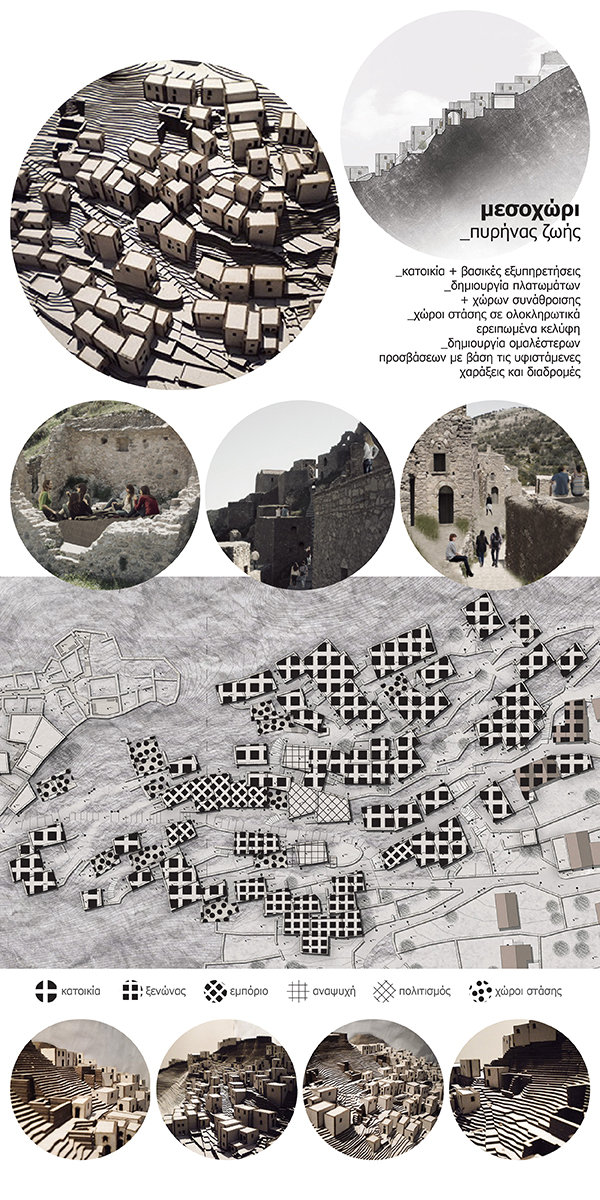
The re-design of the shells focuses on their relation, where they are joined, and on the transition from the inner-private spaces to the outer-public ones. As the outdoor space equates with the public, we try to create semi-public spaces around the entrances of the houses, while, at the same time, private outdoor spaces are provided to most of them, thanks to the possibility of access to the roofs of their neighboring buildings.
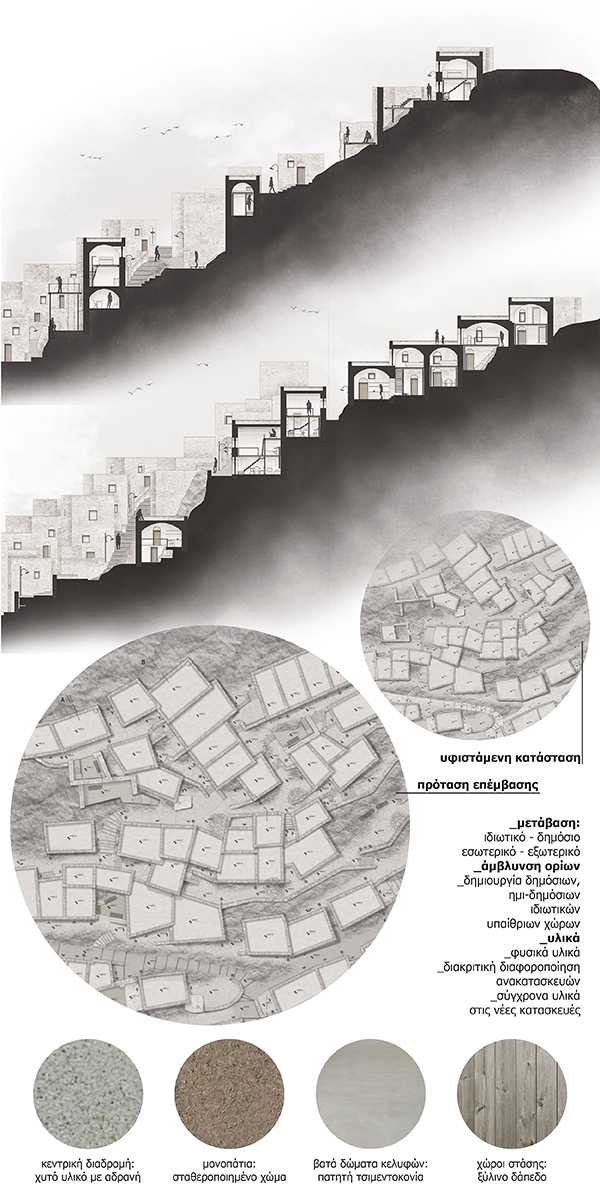
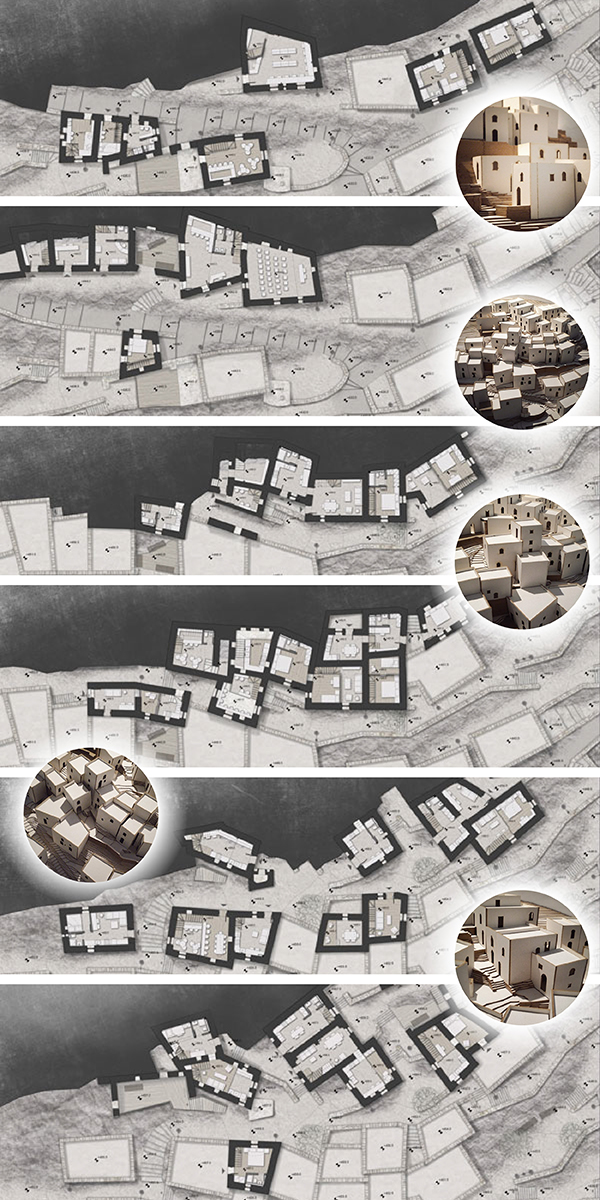
Inside the buildings, there is an effort for the greatest possible space saving, due to the small dimensions of the shells. Modern materials and light structures are selected, and are mounted on independent constructions, and maintain short distance from the stone walls, stating their contemporary nature and the fact that they are easily revocable components which are not injuring the shells. The new openings that are created are limited in number. They have a rectangular shape and are defined by concrete elements, in order to be discernible from the existing ones, without altering the morphology of the total. The new frames that are installed are wooden and follow a simple pattern, resembling morphologically the older ones.
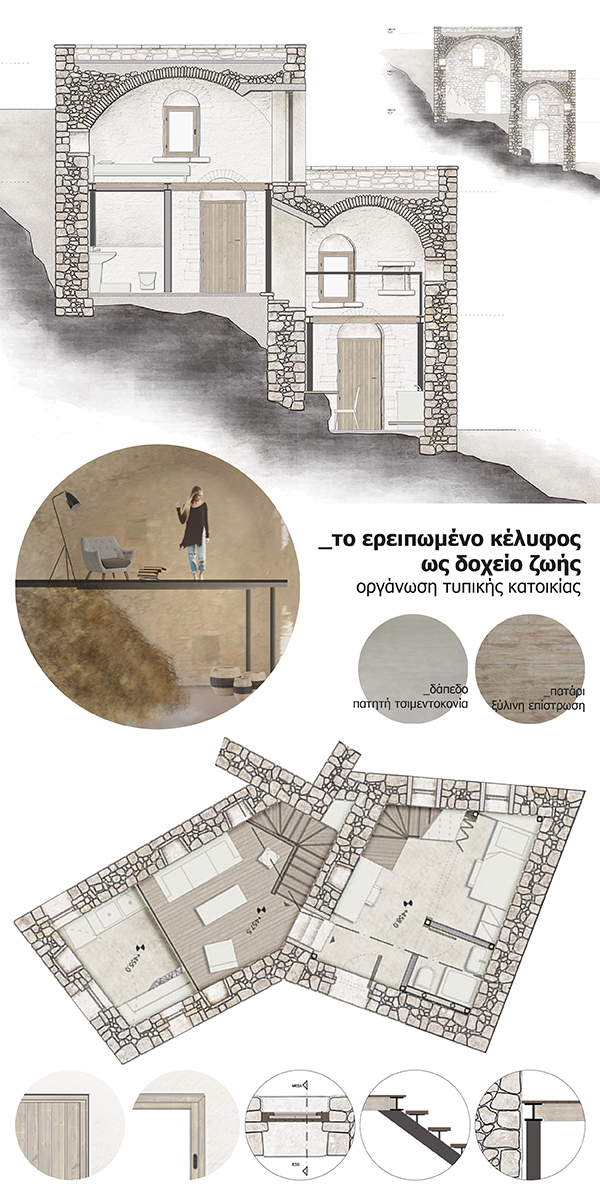
This experimental project proves that the settlement as well as the existing structures, despite their inhospitable nature for contemporary living standards, are able to become vessels of contemporary life and lead to the rehabilitation of the settlement.










